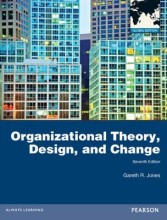Article The Age of Continuous Connection
9 important questions on Article The Age of Continuous Connection
The traditional customer journey can be broken down into three distinct stages:
1. Recognize: when the customer becomes aware of a need.
2. Request: when he or she identifies a product or service that would satisfy this need and
turns to a company to meet it.
3. Respond: when the customer experiences how the company delivers the product or
service.
Strategy 2 Curated offering
With this strategy, companies get actively involved in helping customers at an earlier stage of
the customer journey: after the customers have figured out what they need but before they
have decided how to fill that need.
Strategy 3 Coach behavior
Both previous two strategies require customers to identify their needs in a timely manner, which (being human) we are not always good at. Coach-behavior strategies help with this challenge, by proactively reminding customers of their needs and encouraging them to take steps to achieve their goals.
- Higher grades + faster learning
- Never study anything twice
- 100% sure, 100% understanding
Strategy 4 Automatic execution
Customers give a company permission to take care of something, and from then on, the company takes care of everything. Allows companies to meet customers' needs even before they realize of that need (without customer involvement).
- Customers should be comfortable with the constant flow of data from their devices to companies.
- This varies from person to person: some people do not like that a company knows everything about them, some do. Companies do need to show that they can be trusted.
- Example: when buying your printer, you authorise the manufacturer to remotely
monitor your ink level and send you some new cartridges whenever they get low.
The repeat dimension of a connected strategy helps companies with two forms of learning.
1. Allows a company to get better at matching the needs of an individual customer with the company’s existing products and services.
- Example: Disney sees that a customer like ice cream more than fries, and theatre performance more than fast rides. Information that then allows the company to create a more enjoyable itinerary for him.
2. Companies can learn at the population level, which helps them make smart adjustments to their portfolios of products and services.
- Example: If Disney sees that the general demand for frozen yogurt is rising, it can increase the number of stands in its parks that serve frozen yogurt
Connected Strategy Respond to desire
- Customer expression what she wants and when
- fast and efficient response to orders
- customers are knowledgeable
- customers who don't want to share too much data and who like to be in control
Connected strategy curated offering
- Firm offers tailored menu of options to customers
- making good personalized recommendations
- the uncurated set of options is large and potentially overwhelming
- customers who don't mind sharing personal data but want a final say
Connected strategy coach behavior
- Firm nudges customer to act obtain a goal
- understanding customers needs, and ability to gather and interpret rich data
- inertia and biases keep customers from achieving what's best for them
- customers who don't mind sharing personal data and getting suggestions
Connected strategy automatic execution
- Firm fills customer's need without being asked
- monitoring customers and translating incoming data into action
- customer behavior is very predictable, and costs of mistakes are small
- customers who don't mind sharing personal data and having firms make decisions for them
The question on the page originate from the summary of the following study material:
- A unique study and practice tool
- Never study anything twice again
- Get the grades you hope for
- 100% sure, 100% understanding






























